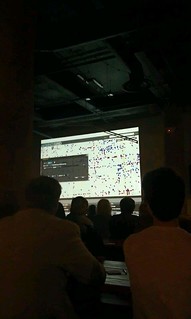- Home
- Who We Are
- What We Do
-
Projects
- Chicago Health Atlas
- Windy Grid
- Illinois Open Technology Challenge
- Civic Innovation in Chicago
- Hosted Web Space
- BTOP
- Sustainable Broadband Adoption
- Smart Communities
- Public Computer Centers
- YOUMedia Expansion
- CHA Computer Center Expansion
- CCC Computer Center Expansion
- Digital Skills Initiative
- Connect Chicago
- CTC Connect
- Smart Health Centers
- News
- Archives

The City of Chicago has published a significant amount of raw data to their data portal at https://data.cityofchicago.org/. Yet, raw data published in flat files is just the start. In order to get meaning and utility from civic data, it’s important to move to a more real-time infrastructure for the publication of data that delivers information in the moment of need.
For example, the City of Chicago has created a new geospatial database— WindyGrid— to manage the vast amount of data they need to manage the enterprise. Smart Chicago is working with the City to building framework to streamline the collection and use of data in order to make the public portions of this data accessible.
Divided into three phases, the first requirement is to build the platform and service. The design requires that a service interface run on top of a cloud-based, NoSQL data platform. As users provide coordinates, the platform draws on sources of data from government to deliver information in the requested area. Many additional applications can be built on this system.
The second phase involves learning about user needs. The system can gather details about users and determine what information is needed and when. This allows for active rather than passive government information delivery. For example, if the user identifies that he or she has recently moved to the city, that person can opt-in for continuous, updated information about new resident meetings, city events, or transportation schedules. Phase three focuses on marketing and the delivery of the information and services.
Notable in the platform’s design is the place-based architecture. It uses location data as opposed to identities, though personal identity and privacy issues will need to factor into the overall design. Clear rules, governance, the role of the private sector, and penalties for data abuse are all critical to the final plan.
Stay tuned for more.
-
Recently
- OpenGov Chicago Meeting: The Knight News Challenge, Mayors Challenge, and WBEZ
- OpenGov Hack Night: VA Records, OpenStreetMap, and Chicago’s data on GitHub
- Last week at Chicago’s OpenGov Hack Night
- Download the CUT Group Flyer and Share With Your Neighbors
- President Preckwinkle’s #TellToni Twitter Chat
- Some Blurbs on the Last Week of January, 2013
- Introducing the CUT Group: Get paid to test civic apps
- You are the data. The data is you.
- Updates on Civic Innovation
- Kicking off Civic Innovation in Chicago on WBEZ’s Morning Shift

